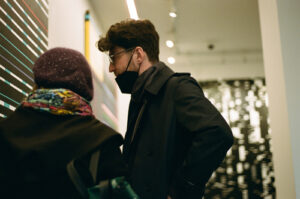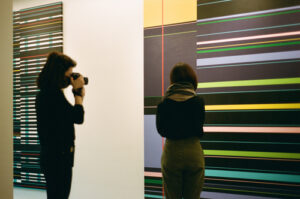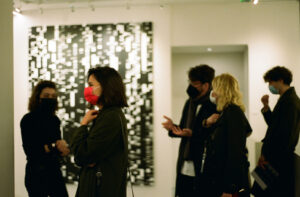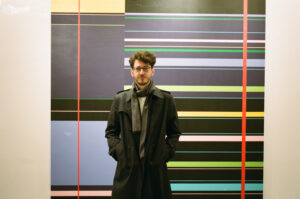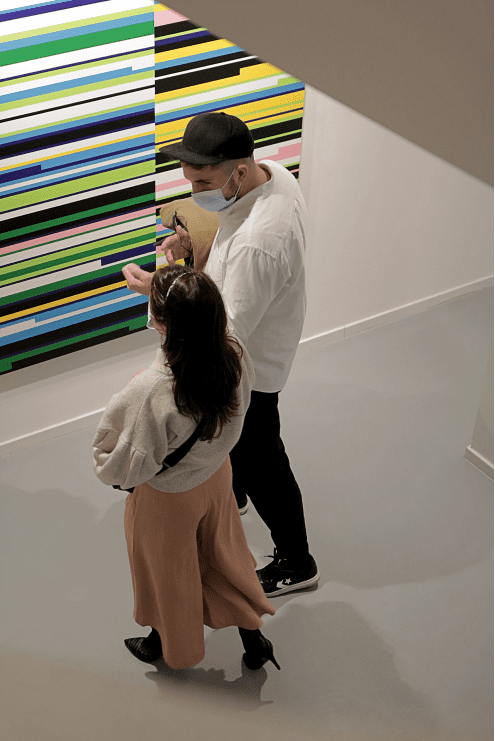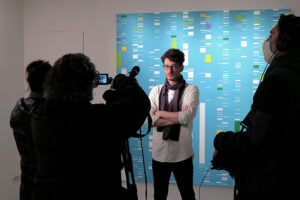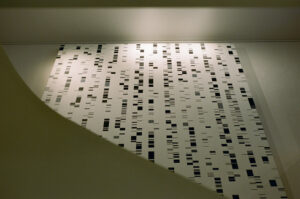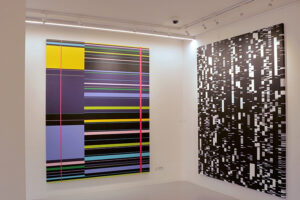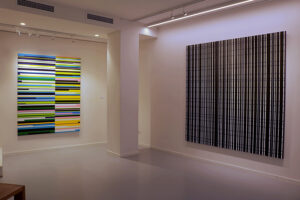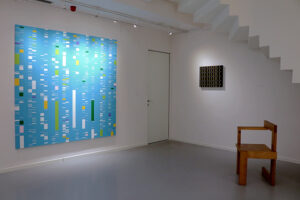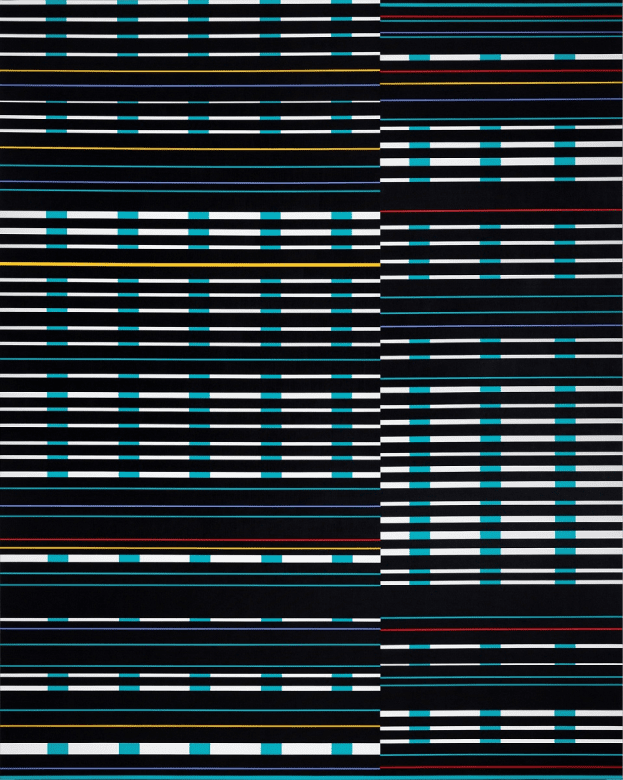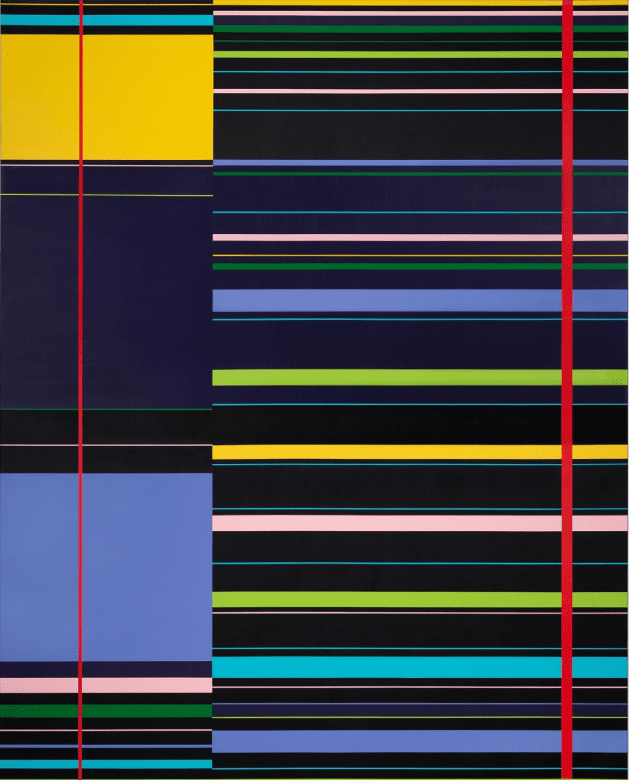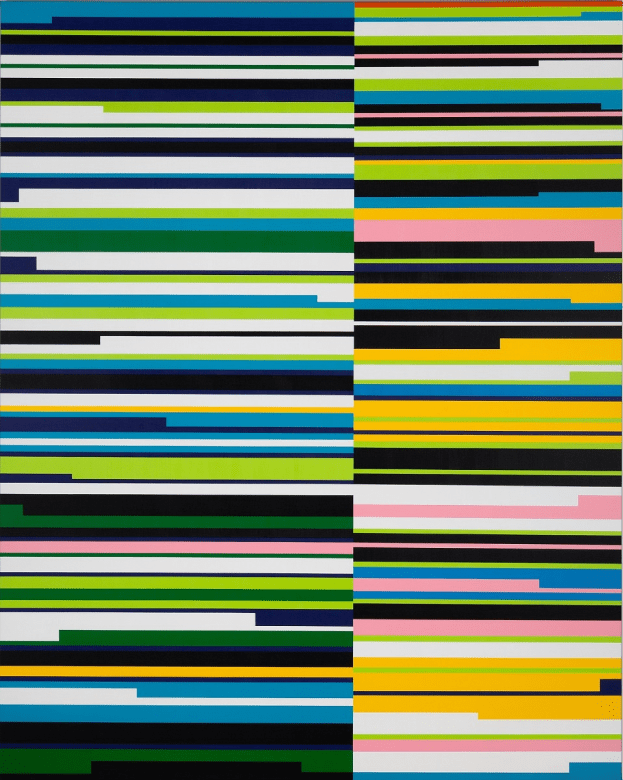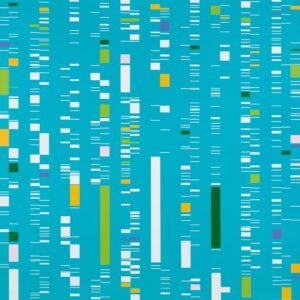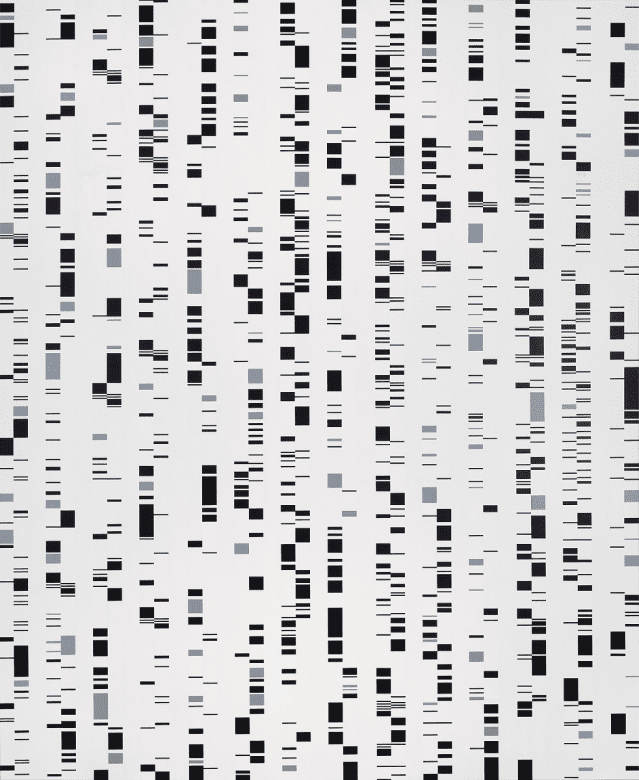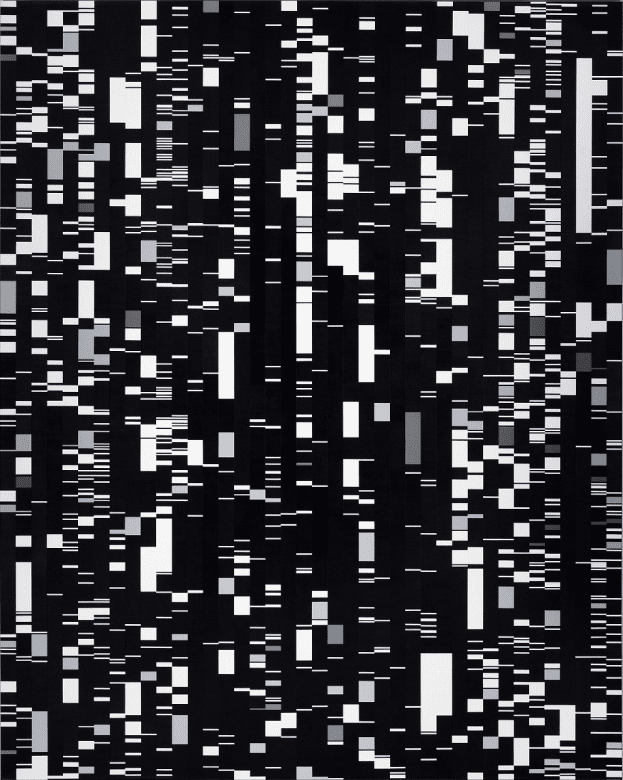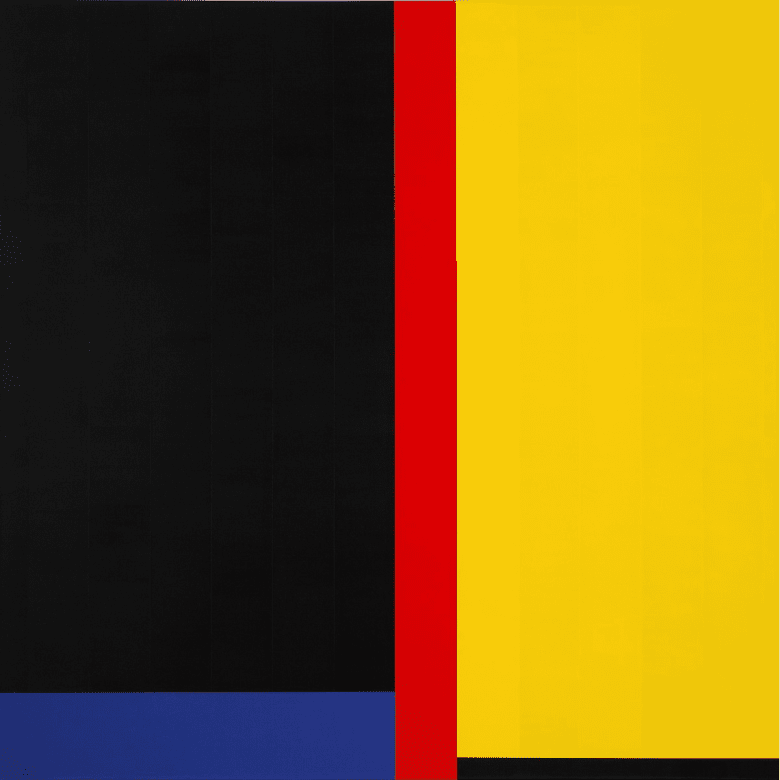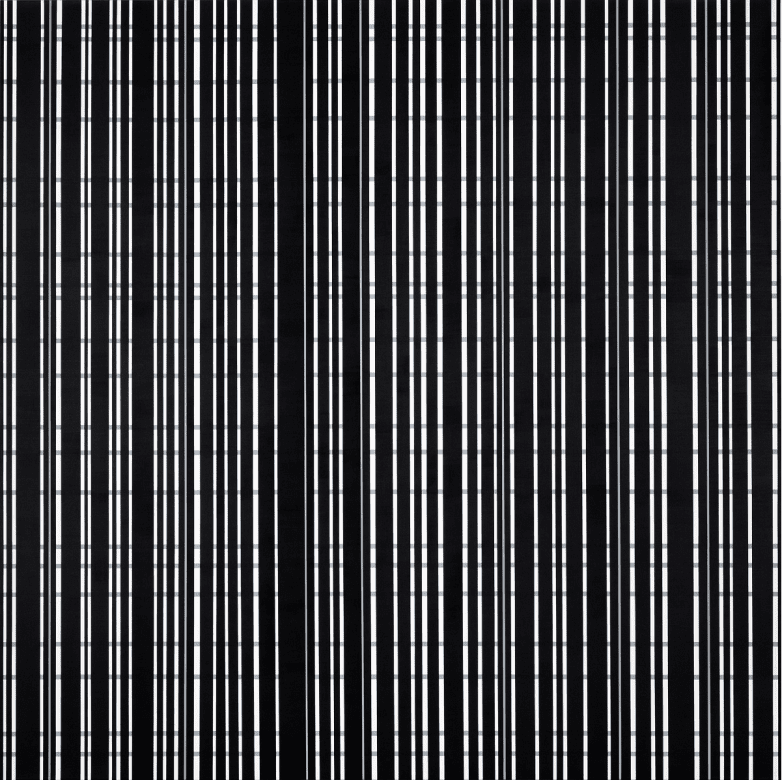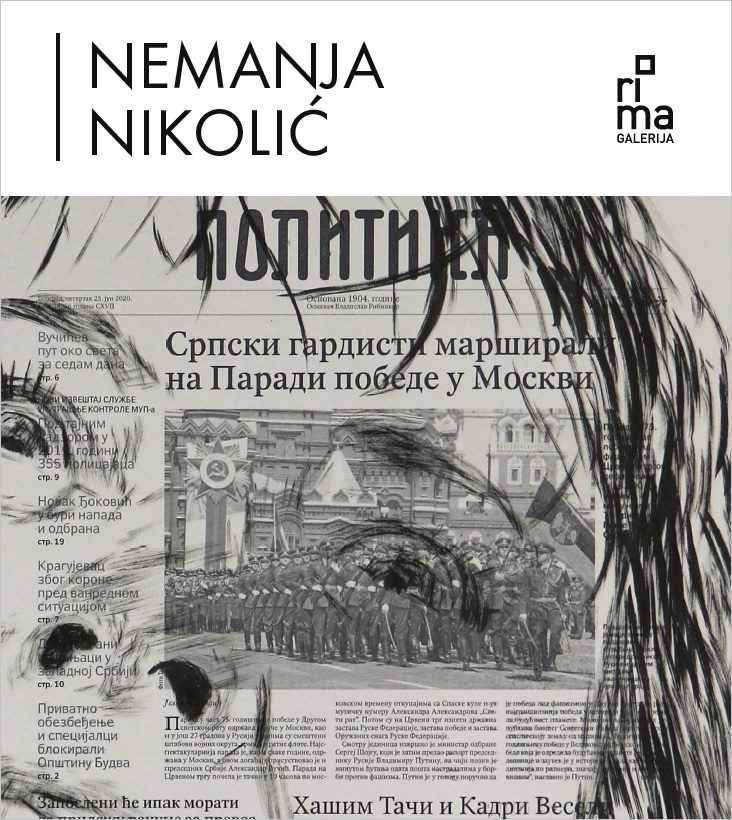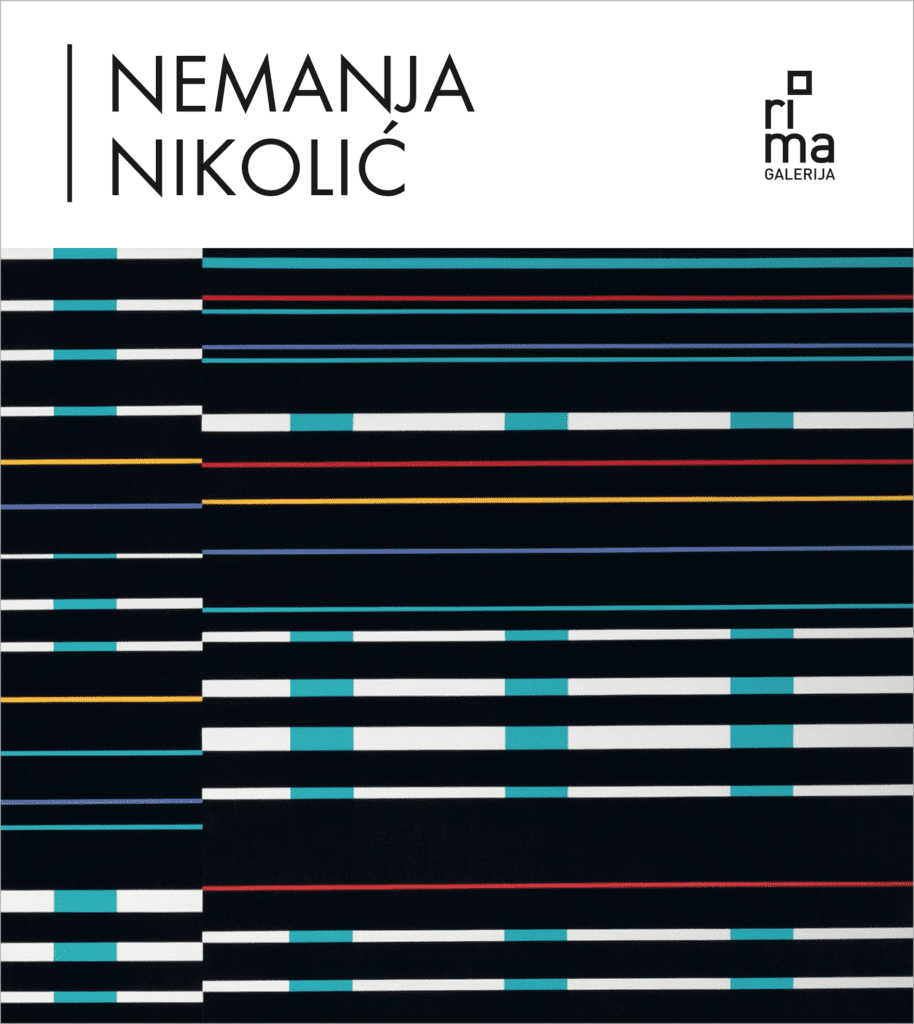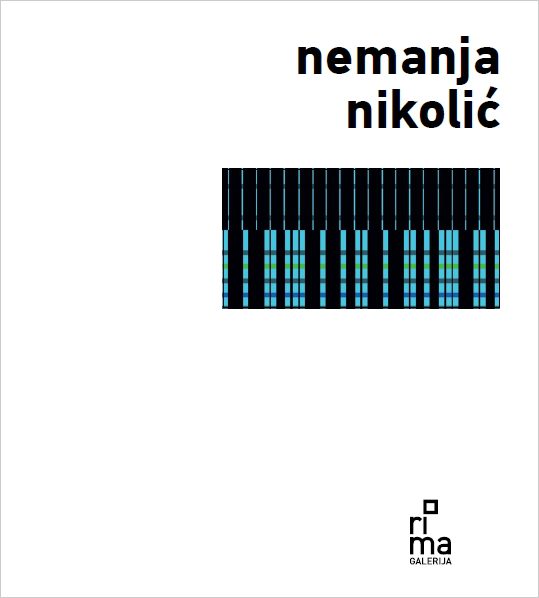13 April - 8 May 2021
Nevena Martinović
NEMANJA NIKOLIĆ: Rhythm Variation
A serious film fan from his childhood, Nemanja Nikolić has almost entirely based his artistic practice on his own cinematographic experience, thus continuing the line of „avant-garde practices of Yugoslav artists focused on experimental research in the area of moving pictures“ In studying the realms of film networking with traditional artistic discourses, such as painting in which he himself has had formal education, Nikolić does not steer his creative work into a straightforward course, but branches it into two different directions that move parallelly. On the one hand, he creates complex multimedia works, including his major artistic project The Plot (2017-2021) where the incorporated cinematographic elements equal the drawing, the text, or the sound. In other part of his opus, starting with the group of works Vertigo (2012-2013) and the cycle Samples of the Liquid Book (2012-2017), over the series Vanishing Fiction (2017-2018) to the latest cycle Rhythm Variations (2019-2021), the artist works exclusively within the discourse of the picture, in traditional painterly medium and the morphological field of geometric abstraction. Here, film, or the experience of film watching, has an ambivalent position, simultaneously crucial in the creative process and marginal in its final section.
Starting from the basic premise that a painting is a two-dimensional flat surface, devoid of any illusionistic or mimetic function, and the artist’s insistence on its non-figurative and non-narrative character, Nikolić’s paintings are constitutively defined by the autonomy of painting as an independent realm determined by its own rules and built by its own elements – colour, line and surface. According to their formal characteristics, Nikolić’s works belong to the other and ramified line of “cold” geometric abstraction, developing from inter-war avant-garde phenomena, such as neo-plasticism and constructivism, over the minimal art of the sixties and seventies to the most diverse aspects of neo-minimalism in contemporary art. By an extreme rationalisation of visual art forms, the geometric models of abstraction endeavour to push out the stubbornest external content from the picture – the one injected in it from the turbulent world of artist’s psyche. Thus, the line of abstraction comes the closest to creating the imperative that a picture speaks only about itself in its own language.
Nikolić’s pictures, for example, those from the latest series Rhythm Variations, morphologically represent surfaces where the artist establishes diverse arrangements of straight lines and regular rectangular fields of different formats and dimensions, by using elementary geometric images and pure colours, free from even the smallest imprecision of the “free hand”. The presence of the artist is erased by a series of procedural stages – from a digital outline produced on a computer, over the transference of that delineation onto the canvas by use of technical devices, to painting by hand when any facture created on the painting is purposefully avoided. The paint is applied flatly and evenly within one field, without tonal variations or any visible traces of brush strokes. Therefore, the picture has been planned in advance, its realisation is also according to plan and in the process of its materialisation there is nothing unexpected or spontaneous. The meaning of such an application of a traditional painterly technique in Nikolić’s works becomes clearer when juxtaposed to Rosenberg-like type of abstraction, where the imprint of paint on the canvas indicates artist’s presence and where painterly tools are primarily the instruments of artist’s expression. In using the same tools, the artist invests the greatest effort and skill in a totally opposite task – to annul every spontaneity and erase every trace of his own specific painterly hand (as evidenced in another big segment of Nikolić’s opus). This extends the discourse on the autonomy of picture because the painter’s instruments and procedures are observed as integral parts of the painting and not as tools of the artist’s creative act.
The above imposes an assumption that Nikolić’s picture is radically non-referential towards the world outside its own framework, but this is refuted by the fact that its departure point lies in film, more correctly, in artist’s experience of film watching. In his doctoral dissertation, Nikolić states: “It has been my desire to produce the impression of film watching inside geometric abstraction, but without the sound, the narrative, fiction or any other aspect of a film” Nikolić carries out this initial idea through the procedure Stevan Vuković recognised as “remediation of film rhythms” consisting of a repeated watching of the same film in order to “extract certain rhythm from it”. However, Nikolić does not use any objective methodology, and never tries to literally follow the director’s idea by his own “punctuation” of sequences, stills and cuts. He chooses films that have made the most powerful impression on him and returns to them focused on those scenes and sequences that have left the deepest trace in his impression. Therefore, the procedure of “extracting rhythms”, seemingly analytical, is intuitively carried out, since each new watching of the same scene makes an advance relationship to the preceding, more or less different experience, deposited within the unstable spaces of memory. As Vuković notices, the rhythmic structure of film content is subjectified on its way to the painting and Nikolić’s “painterly works appear as very subjective and autonomous, because they stem from a personal experience.”
(Complete text in printed edition)
